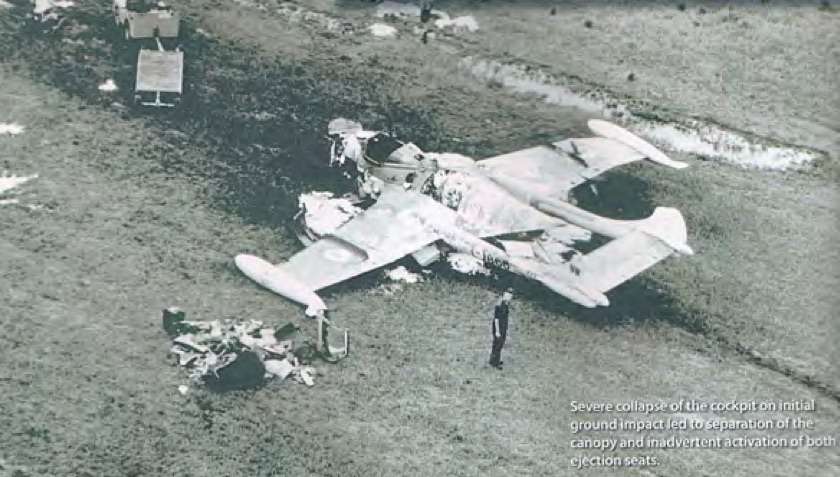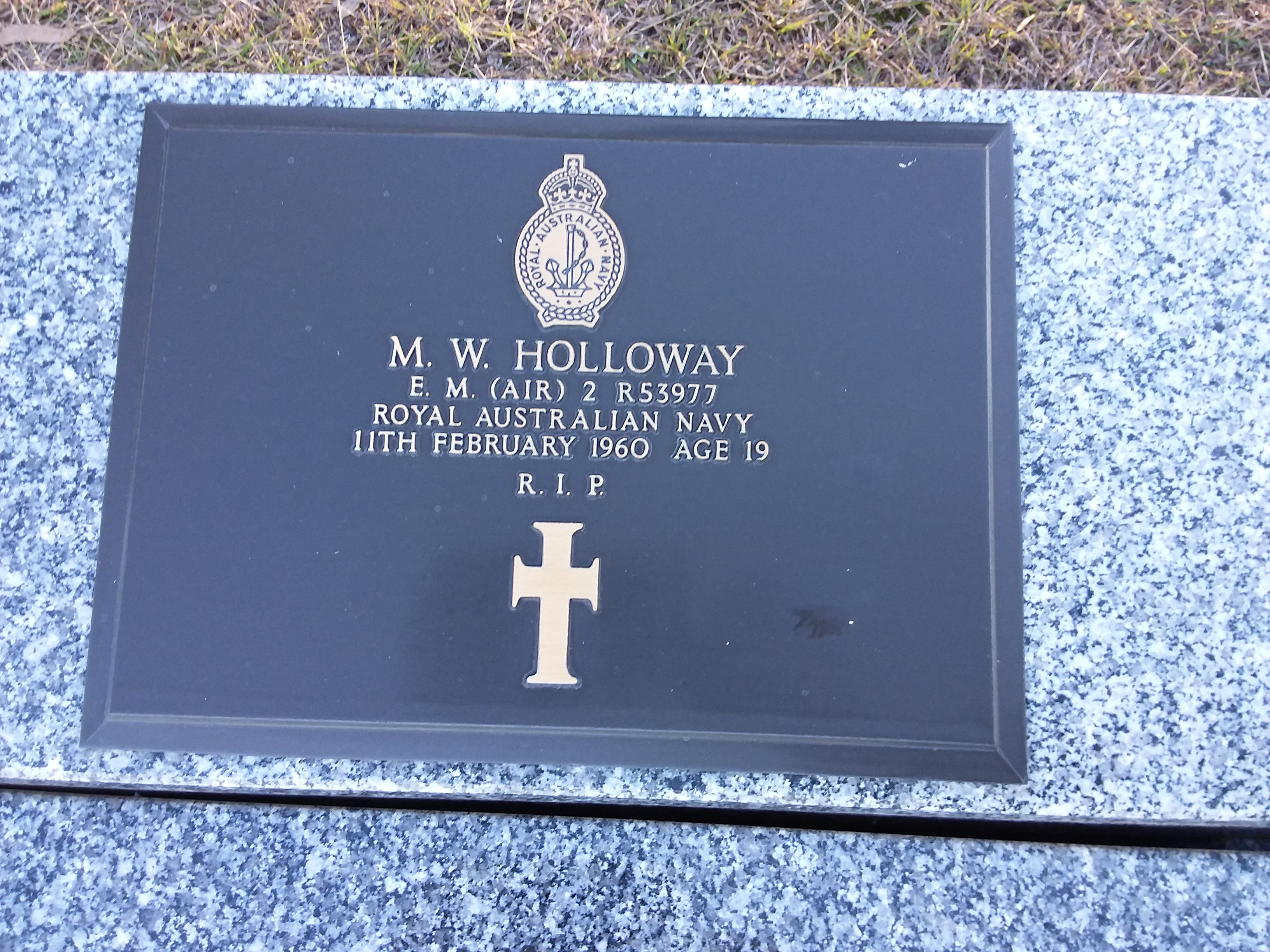Malcolm William Holloway was born on 31 August 1940, at Subiaco, WA. On 22 February 1958 he enlisted for nine years as a Recruit Technician in the Royal Australian Navy (RAN), official number R53977, and was drafted to HMAS Cerberus (FND) Recruit School for his Basic Naval Training.
Prior to his enlistment Holloway was employed as an Assistant Projectionist. At Recruit School he demonstrated an aptitude for electronic and technical matters. At Cerberus he did further trade tests which led to his being posted to HMAS Albatross (RANAS Nowra), the RAN’s Fleet Air Arm (FAA) based, to begin training as an aircraft Electrical Mechanic (EM).
Arriving at Albatross on 2 April 1959, Holloway progressed through his Part 1 trade training, qualifying with an 87% pass. On 13 August he passed his final exams qualifying as an EM(A)2. During this period he worked under supervision on the various FAA aircraft, including the Fairey Gannet, the de-Havilland Vampire and Venom, and other second-line aircraft such as the Sea Fury and Firefly.
Holloway was then assigned to 724 squadron, a training squadron equipped with dual control de Havilland Vampire jet trainers and DH Sea Venom FAW53 fighters. He had a keen interest in his work and an ability to attend to technical problems effectively.
During his time on 724 Squadron Holloway became interested in flying and would take every opportunity to fly as a passenger when there was a spare seat available in either aircraft type. He had become fascinated with flying and was giving serious thought to becoming a pilot.
On a clear February morning in 1960, this passion for flying led Holloway to book a spare seat in Sea Venom fighter scheduled for exercises that morning with a young pilot, Acting Sub Lieutenant Hodgson, who was briefed to conduct Practice Forced Landings (PFL). This involved taking the aircraft to a predetermined position where the pilot would close the throttle to reduce power and with the engine idling, glide back to the runway.
 On 11 February 1960 Hodgson took off from Nowra with his passenger in Sea Venom WZ941 to carry out a PFL. At about three miles from the airstrip and around 5,000 ft he throttled back to reduce power and proceeded with the evolution.
On 11 February 1960 Hodgson took off from Nowra with his passenger in Sea Venom WZ941 to carry out a PFL. At about three miles from the airstrip and around 5,000 ft he throttled back to reduce power and proceeded with the evolution.
On approach to runway 26 at Nowra the Sea Venom undershot the threshold, hitting the ground and severely damaging the cockpit, which caused the two ejection seats to fire without manual intervention. Unfortunately the seats were activated well outside of the survival envelope and both young men were killed.
Postscript
The Board of Inquiry that investigated the cause of the crash made a series of recommendations including: Mandatory rules for inexperienced pilots performing Practice Forced Landings; the upgrading of the approach to runway 26 at NAS Nowra; modifications to the Martin Baker ejection seats to prevent inadvertent ejection; and (importantly) to accelerate the introduction of ground-level ejection seats.
Compiled by Kim Dunstan using the following References:
National Archives of Australia
ADF Serials
Australian Ejection Seat records
Article by John Crawley – Aviation Safety Spotlight Magazine
Wikipedia


